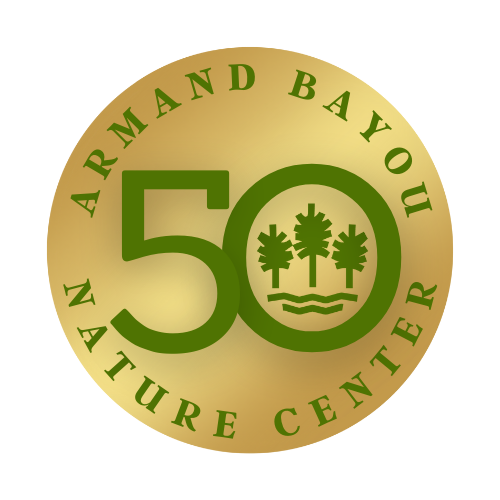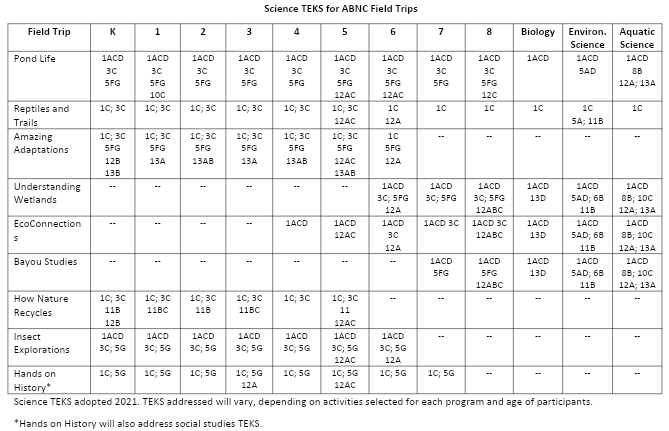This class focuses on the adaptations of plants, birds, and mammals. Participants will have opportunities to touch animal and plant specimens and will be encouraged to draw conclusions about the organisms' adaptations. In addition to the demonstration, participants will take a hike around the nature center, where they can observe plants and animals in their native habitats.
Grades K - 6th ~ Duration 2 hours ~ Group Limit Minimum 10 ~ Fee $20.00/participant (children and adults)
Objectives
Students will:
Define adaptation as a special trait, characteristic, or feature of an animal or plant that helps it survive or reproduce.
Differentiate between learned and inherited adaptations.
Identify some adaptations of plants and animals.
Explore how certain adaptations help plants and animals survive in a particular environment.
TEKS
Programs are adjusted to be age appropriate. All programs address the TEKS goal of engaging students in hands-on investigations of the natural world.
For specific, grade-level TEKS that may be included in our programs, see our TEKS chart.
Vocabulary
Adaptation - a body part of behavior that helps an animal or plant survive or reproduce
Inherited - passed down from parents; some examples of inherited adaptations are eye color, leaf shape, and number of legs
Learned - comes from training or experience; some examples of learned adaptations are looking both ways before crossing the road and catching a ball
Predator - an animal that hunts and eats other animals
Prey - an animal that is hunted and eaten
Habitat - the space where an organism lives and finds food, water, and shelter
Camouflage - coloration or shape that helps an animal blend into its habitat




